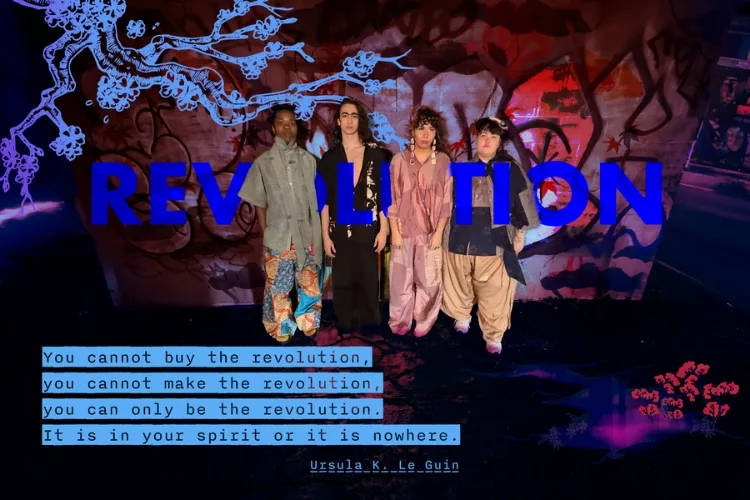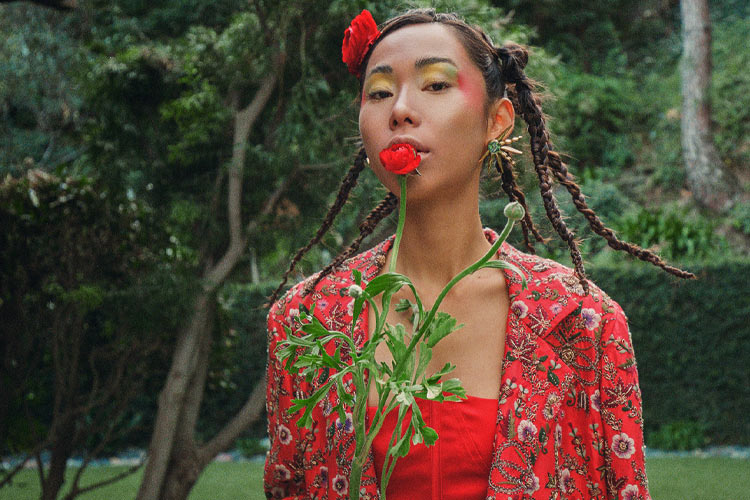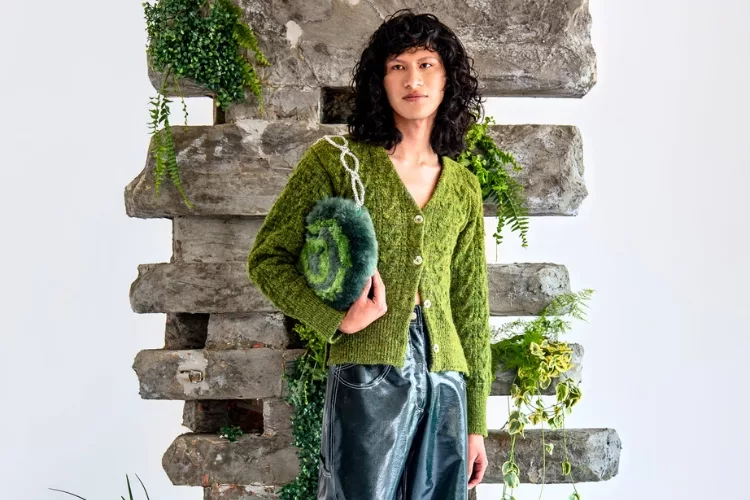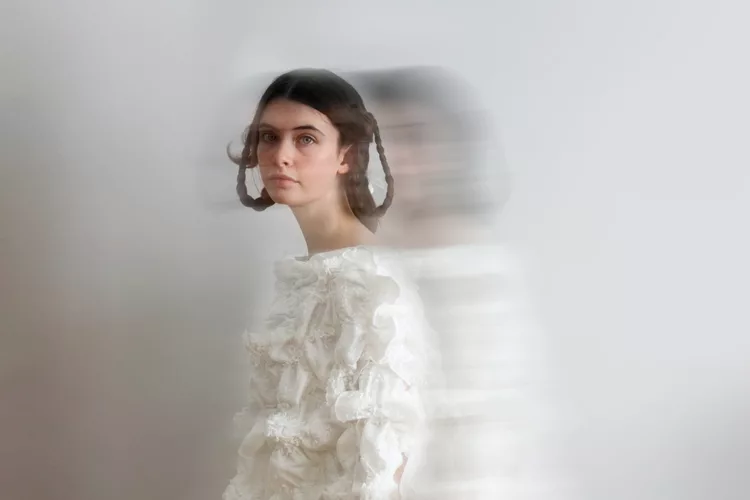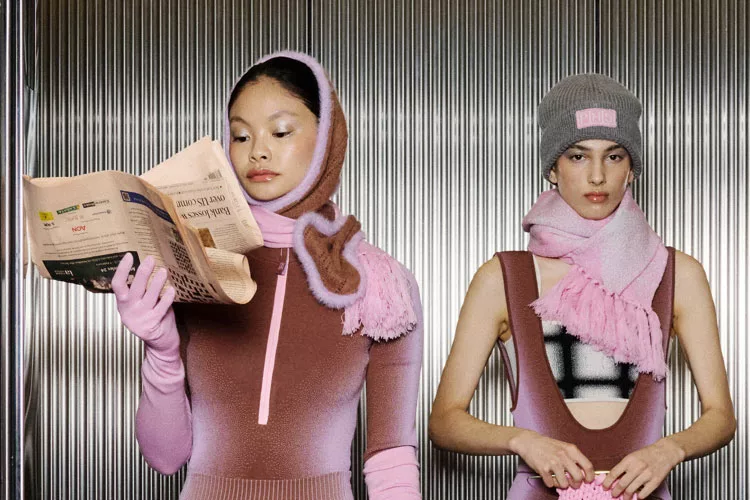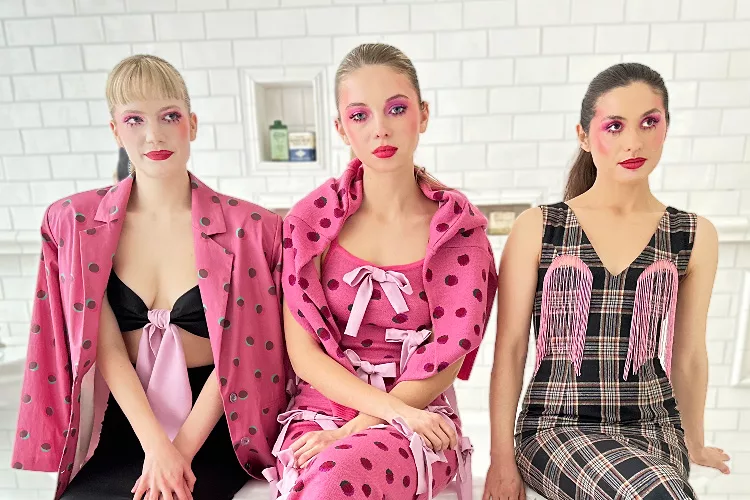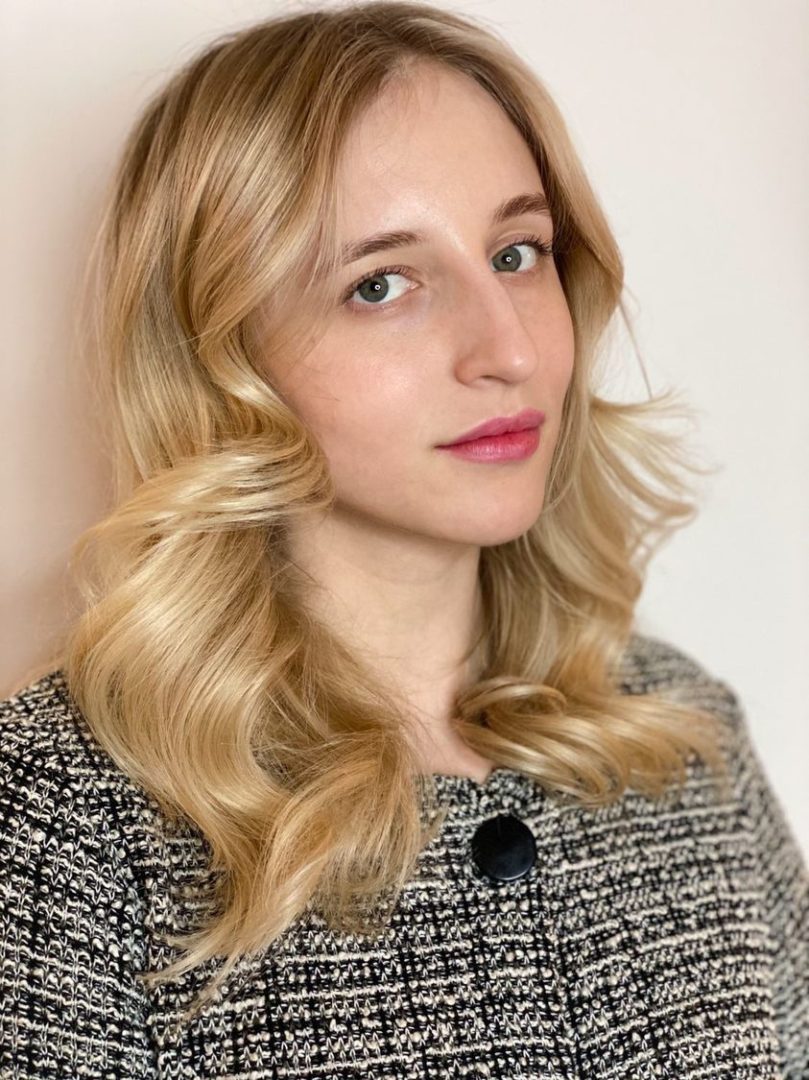
I want to work with things no one really wants to work with to try to show that this can be changed and we can still do profitable production using materials that already exist.
At No Kill Magazine we think about the future of fashion a lot. You might say obsessively. And one of the key things that needs to change –and is changing– is our use of materials. As you probably know, polyester and other synthetics are not only the mainstay of fast fashion but fashion in general. And for the sake of the planet this can’t continue.
Which is why ANDEL, a clothing brand cooperative that recently launched caught my attention. The brand is truly unique in that:
- All their goods are manufactured by highly skilled workers who are paid fairly at a socially engaged factory in Scandinavia.
- Their company is a cooperative with all employees owning an equal share and having an equal say, forming a truly democratic structure.
- No new fossil fuels or virgin plastics are involved in the making of their products.
- All their fabrics are low impact, having been up-cycled, sourced from deadstock or produced locally.
- They believe the key to a leaner and greener fashion industry is transparency, which is why they clearly communicate how their goods are produced and where they source materials.
- They are currently making their clothes in small quantities, with the view to eradicating excess production altogether by making them to order.
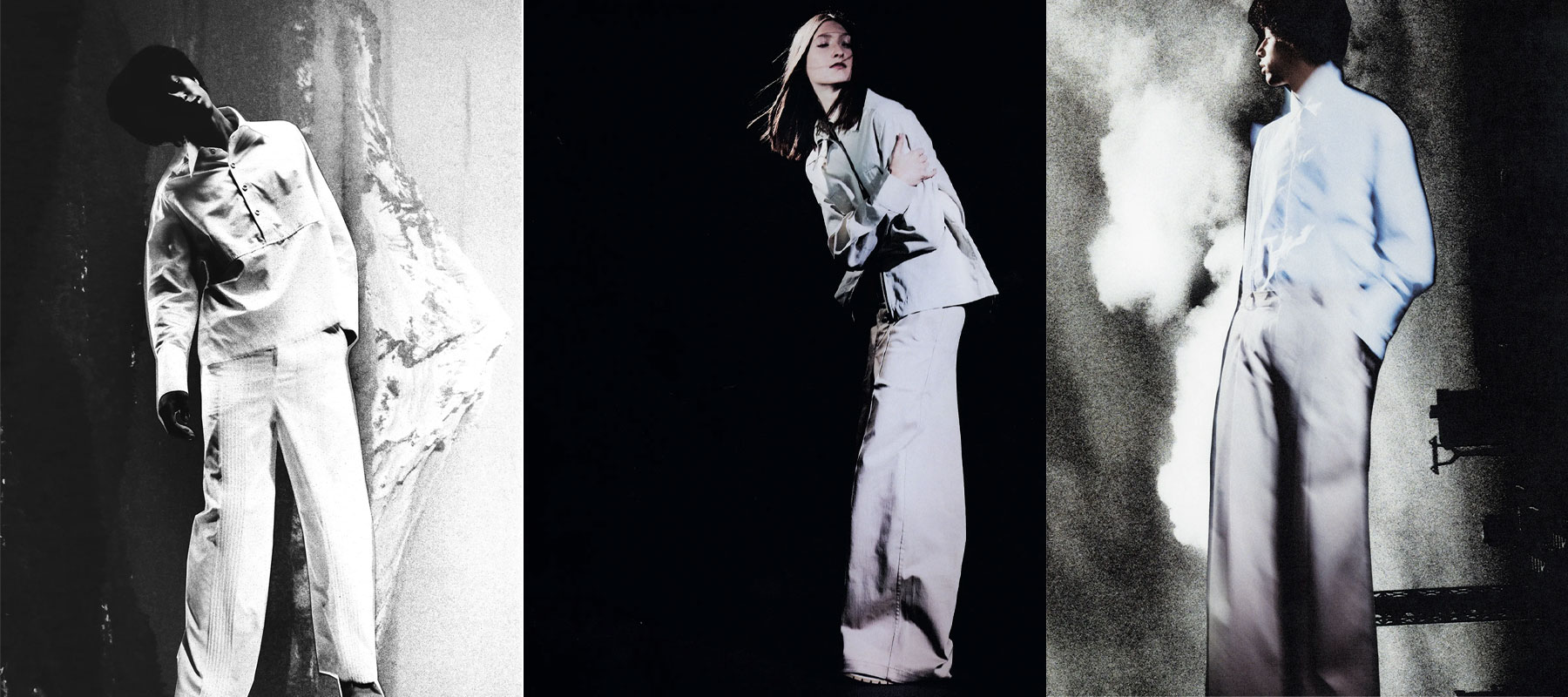
ANDEL is from the Danish word that means “ to share”. It was founded by just three people Peter Dupont (model/entrepreneur), Oscar Miles (designer), and Weronika (Vera) Banas who is a little harder to describe. But (according to ANDEL’s website) Weronika combines creativity and science to develop clean technologies and innovative new solutions for the Design and Fashion Industries. Absolvent of Michelangelo Foundation, Guest Lecturer at Zhengzhou University of Aeronautics and Research Assistant at Healthy Material Lab in New York among other things.
When I saw Vera was in New York I reached out to learn more about her and to find out exactly she does. We had a long in-person conversation and I’ve excerpted it below. Warning: it’s still long –but I think well worth reading.
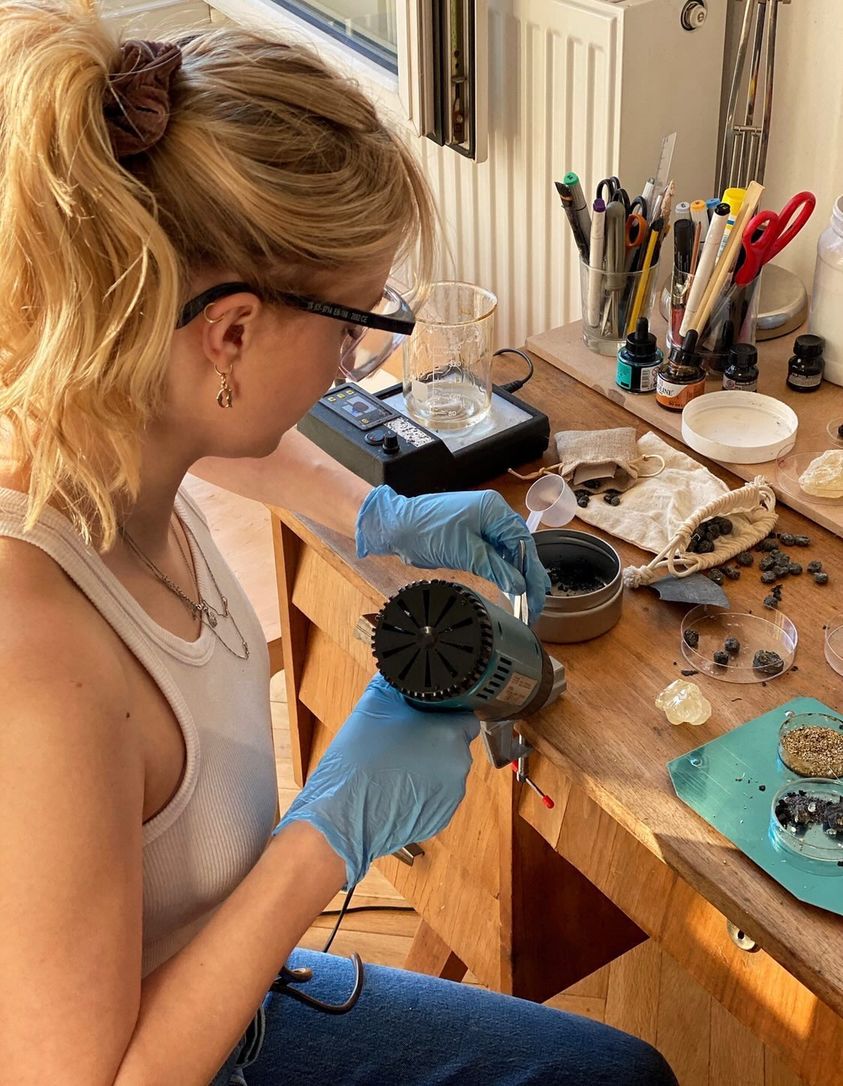
NKM: What are you doing in NYC?
Vera: I’m currently finishing my second master’s degree – this time in Industrial Design at Parsons. I combine the studies with my research into biomaterials thanks to the Fulbright Scholarship.
You are originally from Poland. So how did you end up in New York?
Yes, I was born in a tiny town in Poland and, despite all the struggles, I wanted to do something meaningful with my life. I always wanted to travel but because we didn’t have a lot of money, I had to find an opportunity that would allow me to literally move somewhere. When I wanted to study in Germany, I went on an exchange program. When I lived in Copenhagen, I went to work in the design firm. When I wanted to go to China, I went there through a modeling contract.
That experience, plus a Fulbright scholarship led me to Parsons.
So, from modelling to material innovation?
While modeling in Shanghai in 2015, (after studying materials in Germany), I was looking at fashion from the inside out. And frankly, the amount of overproduction was nothing short of shocking.
I had been designing all kinds of products and I started to think, what about my role? As a creative, as a designer? I love to create –I didn’t want to completely give that up. But we’ve already produced so much.
When you consider the end of products life, in the landfill, that this is the material, not the the product. Products aren’t there because of what they were as an object, be it t-shirt or chair or…They’re there because the material doesn’t degrade/bio-degrade.
This led to an interest in how materials are composted and I began incorporating this type of systems thinking into my design process.
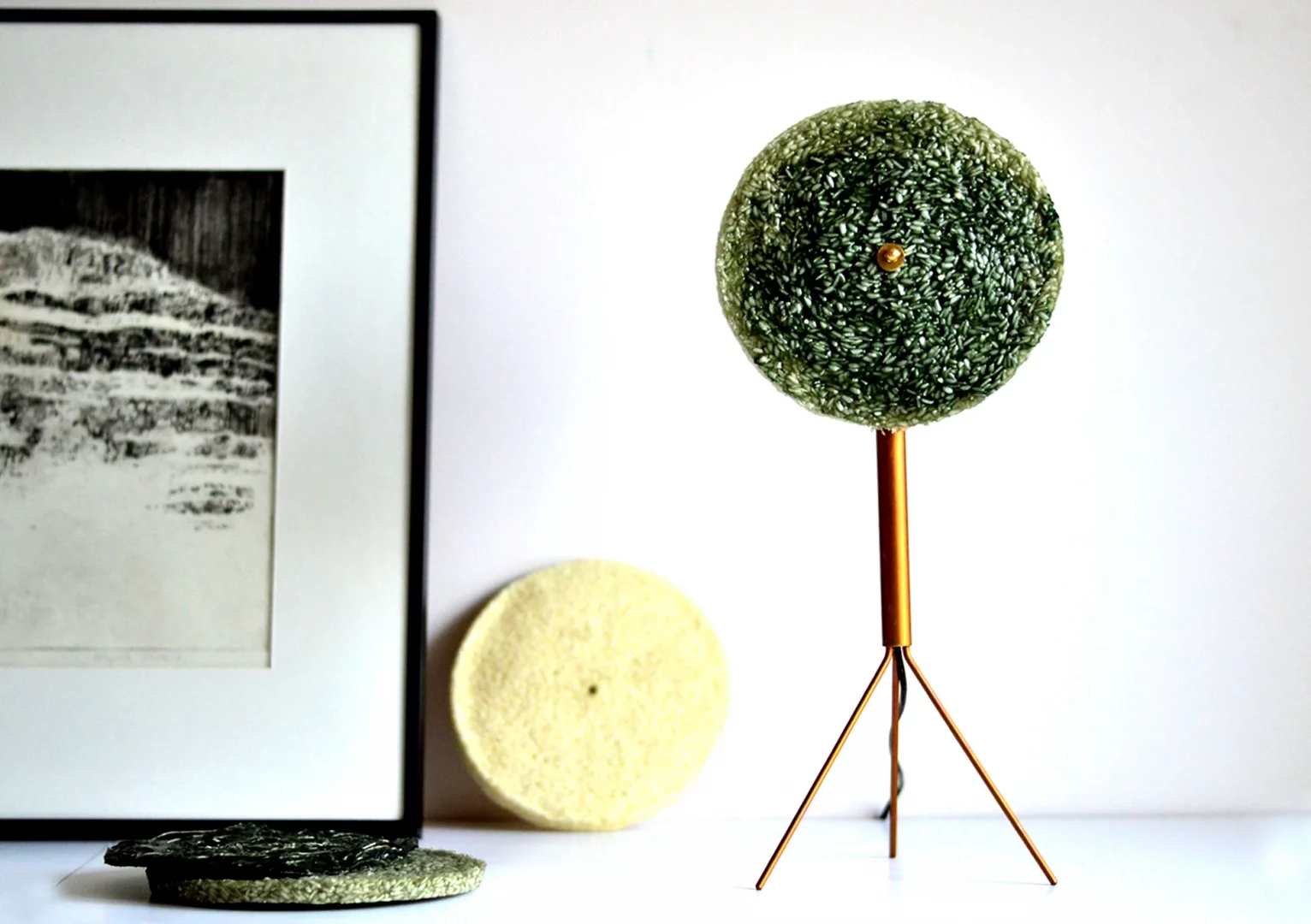
And then in 2018 you won an Instagram competition organized by Healthy Materials Lab!
I was already interested in sustainable design but I struggled to find good resources to learn more. The Healthy Materials Lab at Parsons organized a competition to submit your portfolio and the award was access to their online classes. And I won! The classes were about the toxicity, the materials, the healthy interiors…and because I was already really invested, it was really great to find out more.
What was your winning entry?
It was a lamp that I made from a biopolymer from rice that also gathers the energy from the light itself to glow during the night.
The lamp was the starting point for me. When I started there was not as much interest in sustainability. People were more driven by aesthetic, fast scaling processes. Now, I see the huge shift in perception. More people are getting interested in manufacturing, materials and history behind the products.
How did ANDEL begin and how did you become involved with that?
My main design interest is materials development and creating products and systems that are also conscious and not against the environment.
Fashion to me became the platform that allows for faster communication with our audience because it’s easier to relate to it. And it becomes a matter of scale. If you made 10 lamps, they’ll have some level of impact but it’s not like everybody will suddenly change their lamp to something else. But fashion, it’s more visible, more alive – and more problematic. It’s all about creating products that are conversation starters; products that question scale and how if they’re made differently, they can become real game changers. For our good, and for the environment.
ANDEL is also unique because it is a co-op. Why is that?
We are a workers-owned cooperative so that’s definitely a different system than what’s normally presented. Everyone is equal and we share the same values. This structure is not only profit oriented, the human factor is extremely important and that is the most important difference between us and other brands. I really believe that through ANDEL we will be able to prove that alternative conscious business models have a chance to be successful.
The most difficult part to overcome is that the overall system, the fashion industry, is primarily focused on profit. Yet the money’s not spread evenly around the company as it grows. We wanted to create a co-op business model so there is more pay equity. Thus people would be more willing to cooperate, share and work towards mutual goals to succeed together. People, Planet, Profit.
It’s similar to nature.
If you think of the lifecycle of anything in the world, it’s this really big collaboration of different organisms so the challenge was how to create something like that but within the company structure? Peter started this co-op and through mutual friends he found out I am working within the realm of biomaterials and we also share similar values. So I started to work on the product.
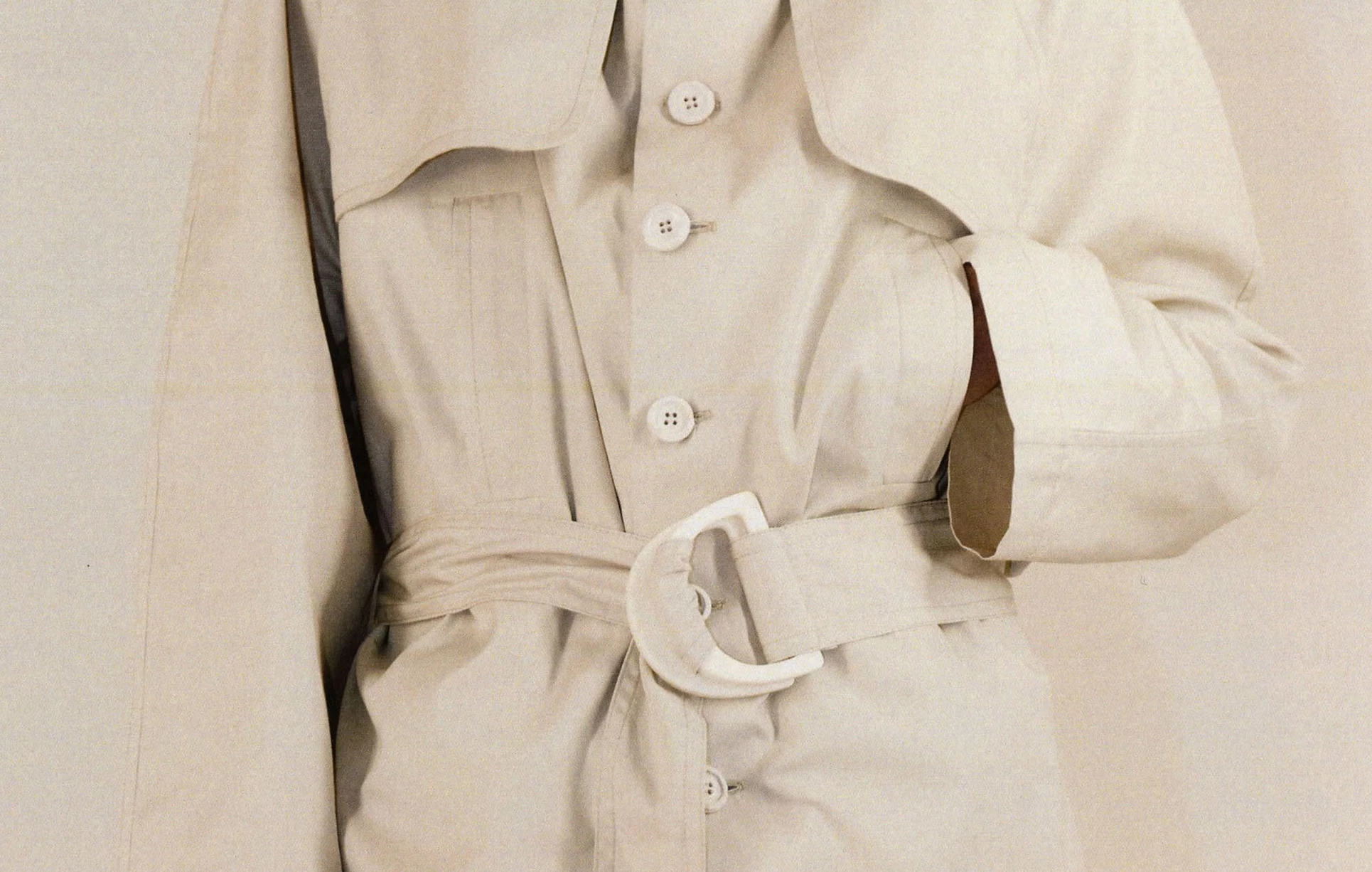
On Conscious Production
Creating conscious production is multifaceted – take the human factor – if a company is collaborating with us for years and it’s a small manufacturer and we decide we will not work with their materials, like leather, then they might be out of work. Now leather is very complex ethically and some people are really against it. So maybe you can justify that. But on the other hand, if we think about some new innovations like grape or apple leather (made from fruit waste that are shredded into powder and most likely mixed with plastic) we are not always creating more sustainable products.
What I mean here is that all of the factors are important, and simply substituting material into novelty will not always be better. Human factors play the most important role and new materials should support it not exclude it. Sometimes the innovation lies equally in material choice, manufacturing system, reduction of carbon footprint. In ANDEL we are trying to innovate in all sectors.
Don’t get me wrong, I wish we had more biomaterials and alternative methods of manufacturing at the market. But I also wish that together with that there will be some systematic changes that allow for more transparency.
I think today we’re just a bit lost. We’ve spent so much time at home these past 2 years and I think what’s most important is to be present, be conscious and be mindful about the production of any product you’d like to put on the market. And the question becomes why? Why do you really want to do it?
What is your role at ANDEL?
I am researching materials, designing elements and manufacturing processes. I created buttons made from soy-based materials and also made with a 3D printing method so they can be produced on demand. This system is introducing material innovation in the field of materials and inspiration to it was Biovers buttons project (Finalist of Biodesign Summit 2021) We’ve got much more to offer and a lot of started research, but we are trying to innovate as we go. We are a new company with a small team so we are involved in multiple processes at the same time.
For example, the wool we use in making our sweater is from this tiny farm in Sweden. We know exactly who makes this product. Also, the dyes are natural dyes. We’re currently having the production in Sweden and in Portugal. I joined ANDEL to show that things can be done differently and to share my knowledge with others. For now, fashion is our communication platform. But everything is extremely thoughtful. Even the tags of the garments, they are water soluble so there is virtually no waste. For shipping we are using packaging you can return.
We’re testing how much we can push ourselves -how much we are able to do within this realm of clothing.
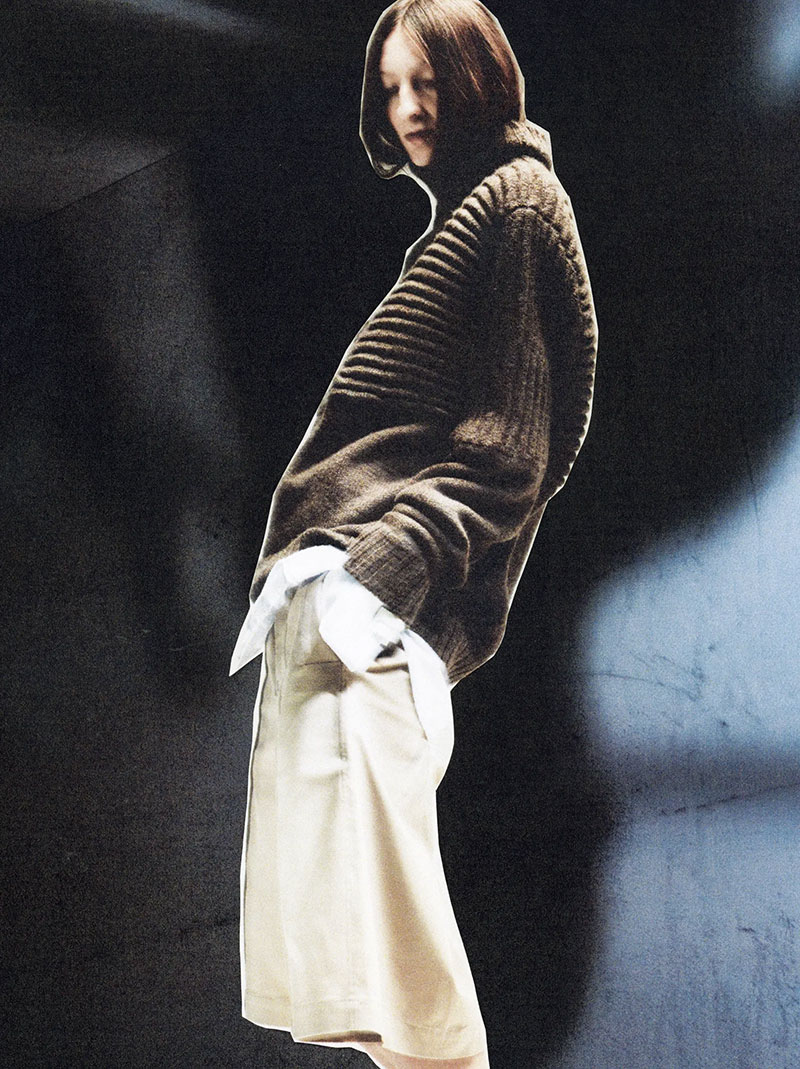
So like prototyping?
Exactly. It’s this constant prototyping but we are planning to do more and more products that will be more socially engaged or will promote different artisans. We are planning to collaborate with craft peoples as well to illuminate their contributions again.
This all can get quite expensive. High costs seem like a potential roadblock.
I definitely agree. And this is something that we are working on because of course we would like to make it as accessible as possible but we also need to support the people that are doing the production. We are still trying to see what works for us and which system will allow us to support the people that we want to support.
It’s not about the profit factor, although of course we want to succeed and maintain the company – it’s about how to create this ecosystem to create garments that people will love and have a connection with the product. Because if we have this connection, we are less likely to throw something away. So, it’s about building this narrative but also this communication. We are just at the beginning and we are trying to define many factors in communicating with the audience.
At No Kill Mag we also want to educate the consumer
This is something that from the beginning was really part of our story. We want to educate about sustainability and we want to talk about current issues. We want to create a platform that has an engaged audience so if someone cannot afford to buy our products yet we can offer something else. We want to work towards creating a community with shared values, organize lectures and share information about materials. We are currently exploring different mediums.
I am a guest lecturer at the Zhengzhou University of Aeronautics in China and because I teach, it’s really important for me to talk about those issues and have an ongoing conversation with a wider audience.
Going back to your lamp. Do you need a science background to do that?
The science I’ve learned myself throughout the years, I am constantly discovering something new. I’m also a member of Genspace. A community lab where you can go and do your experiments. I consider myself more of a translator between science, art and design. I wasn’t trained as a scientist but I’ve learned so much along the way that often I can see the connections that someone who works in only one field doesn’t see. My work is between digital research and physical lab or studio work explorations.
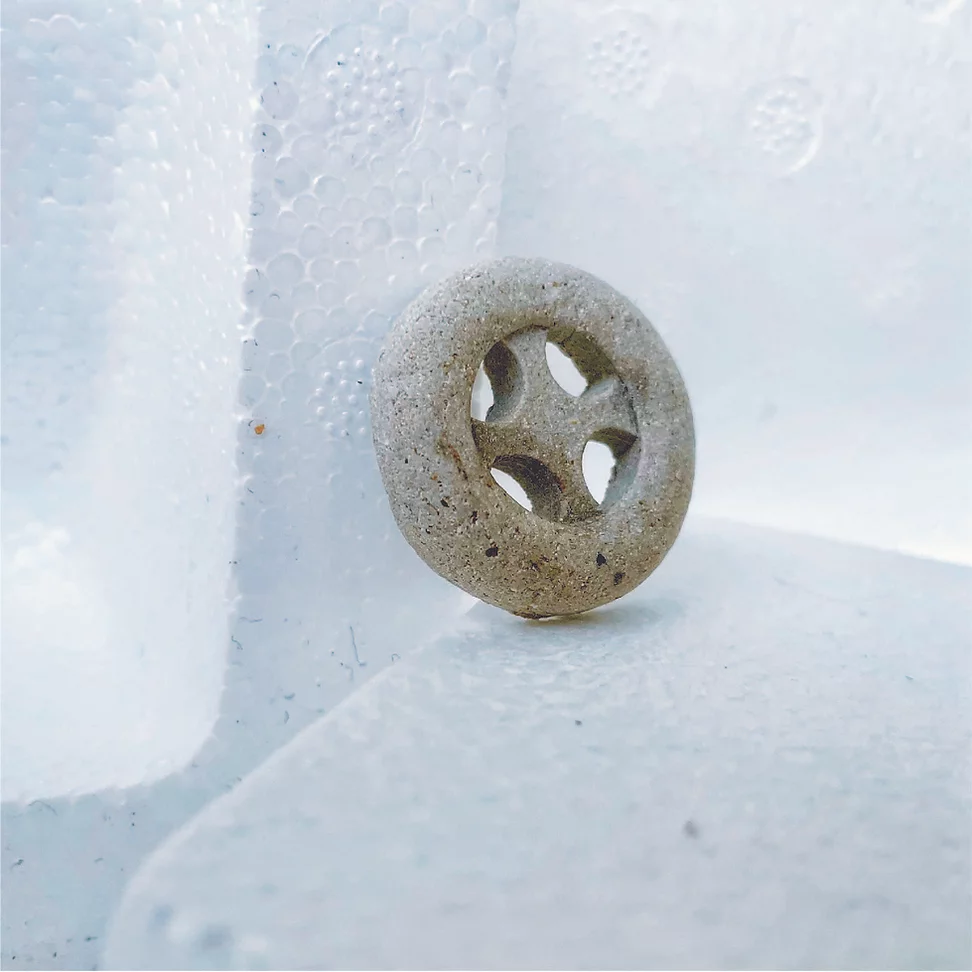
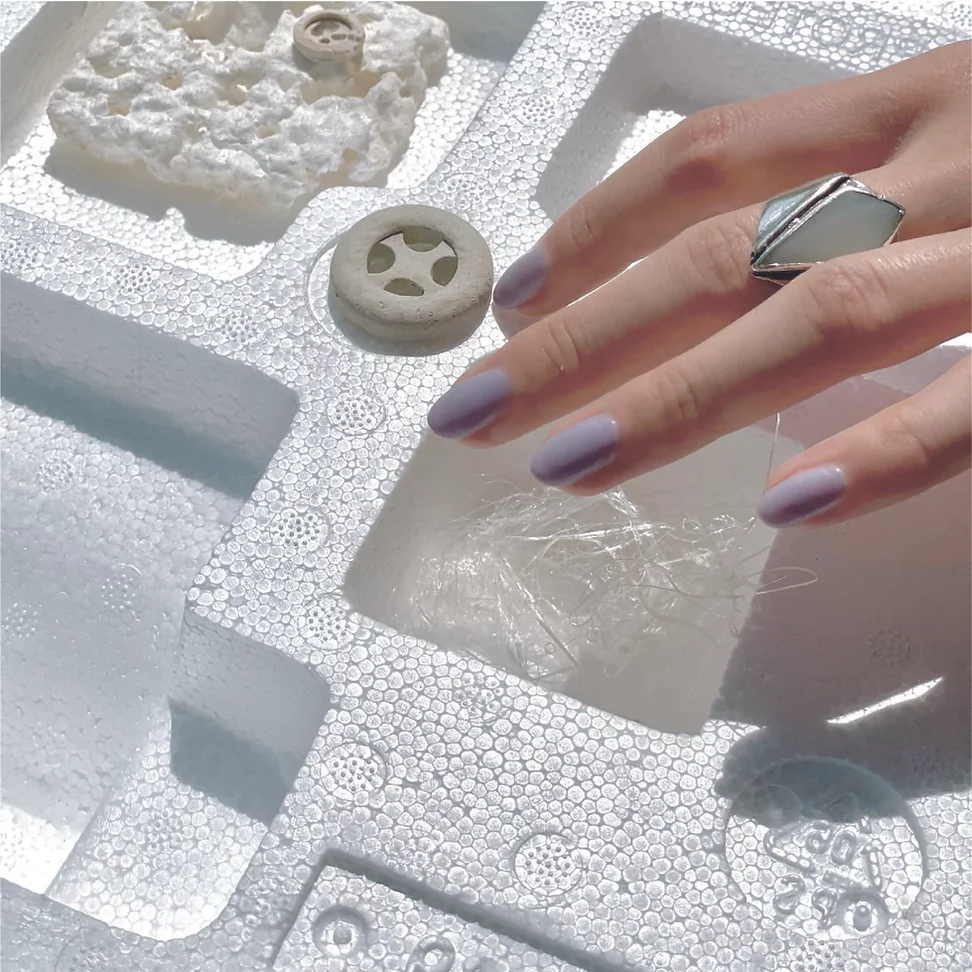
I like to showcase the innovative solutions with something simple (like buttons) that people can understand and talk about.
At the Biodesign Summit, I made the buttons out of polystyrene waste. I created a recycling method by using a substance sourced from citrus peels. This natural recycling method helped to find new applications for the waste. At the end of the life of the product I’ve used mealworm’s digestive system to break down the material closing the loop of the artificial material. I started to work with the buttons and then ANDEL came along and now I have a playground to test all different concepts.
What are you most excited about right now?
Figuring out how I can combine everything that I do and just show it to people, talk more.
I think ANDEL will help me do this.
So, it’s not simply a product. It’s also what a community can build around those products. And around those values. Products are secondary. I think building the values that then people will be able to project in their life, in their customer choices, I think that’s something really fascinating.
And I want to continue to develop my biomaterial solutions and see if I can do anything better than the things that are available. And I need to graduate! (laugh)
5 years from now in the perfect life?
I would love to have my own research lab where I could have a team that could help realize all the ideas I have. Because I feel like we can change so many things. I still want to continue to talk about the importance of materials and create either a digital platform or use other tools to engage and talk about those issues. And show not only my work but others as well because there are a lot of people in this community.
What’s one idea you’d like to try in your research lab?
I would work with alternative polystyrene recycling systems and overall waste. Because while it’s great to create new biomaterials the fact is we already have so much and polystyrene is a very difficult material. It’s been banned in New York but still so much is produced. So much is going to landfills, yet this material can be recycled. But because it contains 90 percent of air nobody wants to do it because it’s not cost effective. So, I want to work with things no one really wants to work with to try to show that this can be changed and we can still do profitable production using materials that already exist.
ANDEL Website | Instagram
Vera’s Website | Instagram
–Katya Moorman
Related Articles
How Biomaterials are Changing the Future of Fashion
TômTex’s Vegan Leather is Gorgeous & Eco-Friendly
Fashion Influencers You Need to Know

